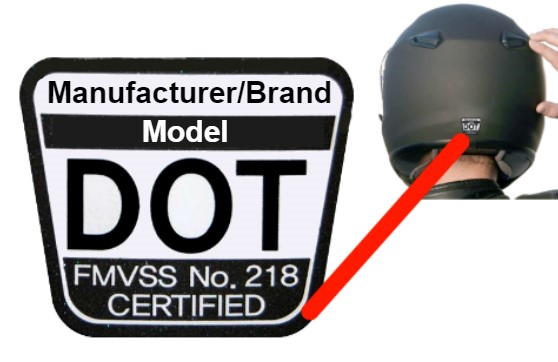According to a data analysis of 2019 U.S. motorcycle accidents, the percent of riders not wearing a helmet in fatal crashes was as high as 80% in some states. While that’s not to say that a helmet would have saved every single one of those lives, protective safety gear can greatly reduce the risk of injury for motorcyclists.
If you have ever ridden on a motorcycle or are considering it, you may have heard of helmets that are “DOT-compliant”. A DOT-compliant helmet is one that has been approved by the Department of Transportation (DOT). Keep reading to learn more about these helmets and the approval process.
Testing Process
Crash simulations are used to test the quality of helmets. These simulations replicate a moderate impact, with up to 250x the force of gravity. Helmets should ideally absorb the force of the crash, so that’s what they’re being tested for.
However, the DOT doesn’t actually do the testing themselves. Instead, they release safety standards to every helmet manufacturer, who then tests and self-certifies their helmets if they meet those regulations. Every year, however, the Office of Vehicle Safety Compliance does test a selection of helmets to ensure their compliance.
According to the NHTSA, there are three main tests that are done on motorcycle helmets.
Impact Attenuation Test
All tests are done on three different size headforms to represent different head sizes (small, medium, and large). For this test, a steel anvil is used to make 32 impacts in various locations in order to test the strength of the helmet. The anvil and helmet collide at a particular speed that will simulate the impact speed of someone traveling on a motorcycle.
Penetration Test
A penetration striker is dropped down on helmets as another test. After the striker free falls and makes contact with the helmet, it is removed from the headform to check for any contact that was made. If any contact is made with the headform, it fails.
Peripheral Vision
There isn’t a test to check for proper peripheral vision, just guidelines. The minimum angle acceptable for peripheral vision is 105 degrees on each side of the mid-sagittal plane.
How Do I Know if a Helmet is DOT-Compliant?
The National Highway Traffic Safety Administration provides a list of guidelines for choosing the right helmet. Categories that should be considered when selecting a helmet include shape, size, and style. The main indicator that a helmet is safe is that it has a DOT sticker on the back. The sticker should include the manufacturer or brand name, the model number, “DOT”, and “FMVSS No.218 Certified.” FMVSS stands for Federal Motor Vehicle Safety Standards.

However, it is important to be aware that some retailers use fake DOT stickers on their helmets. When in doubt, refer back to the list of the DOT’s safety standards. Signs of dangerous helmets include ones that are less than one inch thick or have chin straps with a plastic buckle. DOT-compliant helmets will have a stiff foam liner, hard outer shell, face shield, strong rivets, comfort liner, and a face/chin protector.